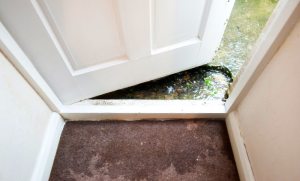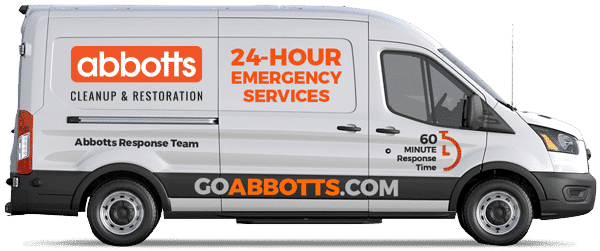Abbotts Water Damage Emergency Action Guide

The water is rising. What do you do?
While Abbotts Fire and Flood will clean up and repair your flooded or water-damaged property like new, there are some things you can do to help. The actions you take before, during and after water damages your property can help lessen the damage and reduce the time and expense to get it restored and your life back to normal.When flooding strikes, you have to act fast to minimize water damage.
Safety First & Always
Before you do any kind of work in an area that has water damage, make sure you consider possible safety and health hazards that may be present.
Common hazards associated with water leaks and flooding include:
- Electrical hazards
- Gas leaks
- Chemical and biological contaminants in flood water and its residue
- Potentially toxic concentrations of mold and its spores
- Structural weakening in saturated building materials
- Dangerous wild animals washed into structures during flooding
These are only a few of the hazards you may encounter in your flooded or water-damaged structure. Make sure that you proceed with caution, regularly assessing areas for these and other risks as you follow these guidelines.
WHAT TO DO WHILE YOU ARE WAITING FOR ABBOTTS TO ARRIVE
- Find the source of the water and stop it, if possible.
- If the source of the water damage is a pipe break, turn off water at the main shut-off valve.
- In most single-family homes, the shut-off valve is in the basement or in the crawl space, on a wall facing the street (usually at the water meter or where the main line enters the house).
- Leave the faucet(s) open to reduce the pressure until repairs are completed.
- Do NOT try to thaw a frozen pipe with an open flame as this will damage the pipe and may even start a building fire.
- If the source of the water damage is a pipe break, turn off water at the main shut-off valve.
- Open doors and windows to allow air into the structure.
- Protect nearby dry, uncontaminated contents by moving them to clean dry areas.
- Do not operate electrical equipment in wet areas. If necessary, turn off circuit breakers to impacted area(s).
- Do not run fans or air conditioning if the damage is caused by flooding or a sewage leak. Doing so can spread contamination.
- Do not handle sewage-contaminated materials without proper personal safety protection: there are bacterial, pathogenic, respiratory and infection hazards.
- Do not moved sewage-contaminated materials to uncontaminated areas as it will expand the scope of areas that will require sanitization.
- Remove furnishings from wet carpet to avoid staining – if it is safe to do so.
- Remove breakable items and items that are susceptible to water damage – if it is safe to do so.
- Remove or lift curtains and other hanging items that touch the floor to avoid damage and staining – if it is safe to do so.
- Thoroughly wash your hands and disinfect tools and equipment used in water damage cleanup.
- Check our our Water Damage Survival Guide for important resources in the restoration process.

